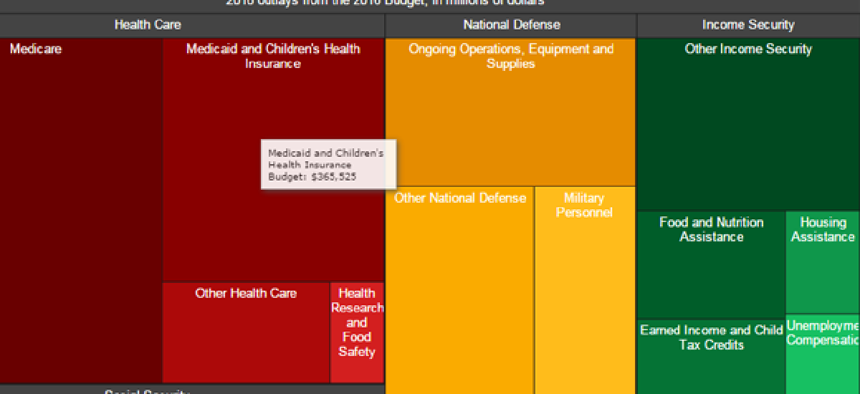White House open sources FY 2016 budget


Connecting state and local government leaders
The White House has released a machine-readable version of the budget on GitHub, posted it to the blogging platform Medium created an interactive visualization for its website.
For policy wonks, Monday was considered to be Christmas in January – Budget Day – the day when the president sends his budget request for fiscal year 2016 to Congress. To add to the joy of policy and fiscal analysts who will be scrutinizing every dollar in the nearly $4 trillion budget, the White House delivered the first open sourced budget.
In the spirit of the Open Gov initiative, the administration announced that the FY 2016 budget and the process for its release would be available in a machine-readable format on GitHub. The White House believes it's important that the public has as many tools as possible to see what is in the President's proposals. By releasing the entire FY 2016 budget related data on GitHub, individuals ranging from economists to everyday citizens can create visualizations, graphs, or products for free.
The GitHub repository includes three data files that contain an extract of the Office of Management and Budget budget database. The .csv files can be used to examine unpublished details below the levels of aggregation published in the budget.
The White House also announced the budget will be available in its entirety on the popular blogging website Medium. The new easy-to-read format separates the budget’s sections into a more user-friendly, blogger interface that many individuals might be more accustomed to and familiar with. The White House hopes to reach a larger and more diverse audience by using the blogging website. Users will also be able to post comments to various sections of the president’s budget on Medium.
Another display of transparency and inclusiveness related to the budget’s release are podcasts from members of the president’s budget team who describe their roles in producing the $4 trillion dollar proposal and the database that accompanies it.
Aron Greenberg, budget methods specialist in OMB's Budget Review Division, described in one podcast how he maintains the vast database for budgetary information. Among other things, Greenberg described how the database captures information sets for every dollar Congress appropriates and runs 350 automated error checks backed-up by manual reviews to catch any mistakes.
For those who simply want a quick visual and do not want to sift through pages of numbers, the White House has provided an interactive budget website. With this visualization, users can place their cursor over various departments to uncover how much the president has requested for its funding. The chart is arranged proportionately to the amount requested to provide an easy visual for the departments receiving the most funding to those receiving the least.

NEXT STORY: How big data tool experience tracks with tech salaries




